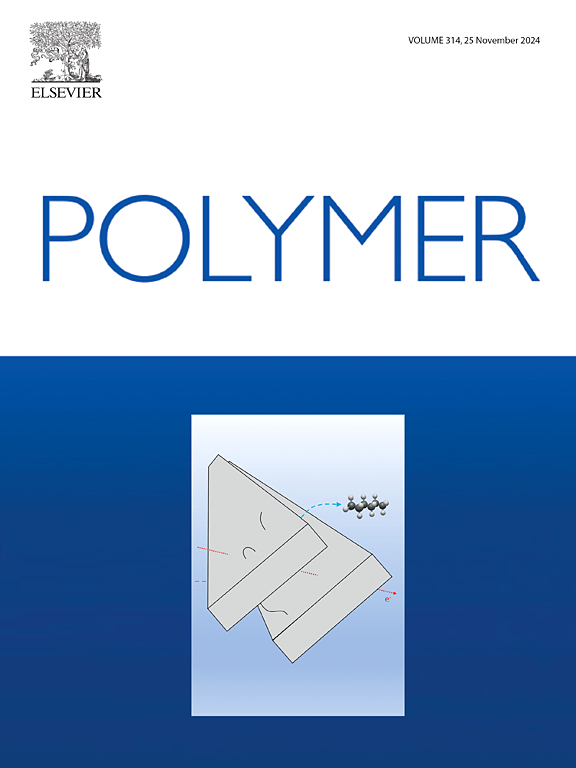An Anti-Infective Polymer Coating to Reduce Surface Transmission of Pathogens on Personal Protective Equipment
IF 4.1
2区 化学
Q2 POLYMER SCIENCE
引用次数: 0
Abstract
Face masks are vital in protecting individuals from respiratory viruses but can serve as a source of infection if improperly used or re-used. Herein, we report anti-infective polymer coatings comprised of anti-fouling poly(oligoethylene glycol methacrylate) (POEGMA) functionalized with hydrazide groups for promoting adhesion and a quaternary ammonium compound (QAC) and/or grafted ciprofloxacin as the anti-infective component. The polymers could be functionalized to the surface of spunbonded polypropylene used for face masks using a simple aqueous dip-coating process. The QAC-functionalized coatings demonstrated a 2.0 log reduction against Staphylococcus aureus, a 1.5 log reduction against Escherichia coli, and a 0.8 log reduction against Pseudomonas aeruginosa after five hours of contact time; combination coatings containing both QAC and ciprofloxacin enabled a 2.1 log reduction against S. aureus, a 4.1 log reduction against E. coli, and a 7.3 log reduction against P. aeruginosa. In parallel, the masks maintained their key mechanical properties as well as remained in full compliance with the ASTM standards for barrier face coverings in terms of breathability and particulate filtration efficacy. Thus, this coating strategy offers potential to reduce the risk of infection from mask wear or reuse.


一种减少病原体在个人防护装备表面传播的抗感染聚合物涂层
口罩在保护个人免受呼吸道病毒感染方面至关重要,但如果使用不当或重复使用,可能成为感染源。在此,我们报道了抗感染聚合物涂层由抗污染的聚聚低聚甲基丙烯酸乙二醇酯(POEGMA)和季铵化合物(QAC)和/或接枝环丙沙星作为抗感染成分组成。该聚合物可以通过简单的水浸涂覆工艺被功能化到用于口罩的纺粘聚丙烯表面。qac功能化涂层在接触5小时后,对金黄色葡萄球菌的抗性降低2.0对数,对大肠杆菌的抗性降低1.5对数,对铜绿假单胞菌的抗性降低0.8对数;含有QAC和环丙沙星的复合涂层对金黄色葡萄球菌的抑制作用降低了2.1对数,对大肠杆菌的抑制作用降低了4.1对数,对铜绿假单胞菌的抑制作用降低了7.3对数。与此同时,口罩保持了其关键的机械性能,并在透气性和颗粒过滤功效方面完全符合ASTM屏障面罩的标准。因此,这种涂层策略提供了降低口罩佩戴或重复使用感染风险的潜力。
本文章由计算机程序翻译,如有差异,请以英文原文为准。
求助全文
约1分钟内获得全文
求助全文
来源期刊

Polymer
化学-高分子科学
CiteScore
7.90
自引率
8.70%
发文量
959
审稿时长
32 days
期刊介绍:
Polymer is an interdisciplinary journal dedicated to publishing innovative and significant advances in Polymer Physics, Chemistry and Technology. We welcome submissions on polymer hybrids, nanocomposites, characterisation and self-assembly. Polymer also publishes work on the technological application of polymers in energy and optoelectronics.
The main scope is covered but not limited to the following core areas:
Polymer Materials
Nanocomposites and hybrid nanomaterials
Polymer blends, films, fibres, networks and porous materials
Physical Characterization
Characterisation, modelling and simulation* of molecular and materials properties in bulk, solution, and thin films
Polymer Engineering
Advanced multiscale processing methods
Polymer Synthesis, Modification and Self-assembly
Including designer polymer architectures, mechanisms and kinetics, and supramolecular polymerization
Technological Applications
Polymers for energy generation and storage
Polymer membranes for separation technology
Polymers for opto- and microelectronics.
 求助内容:
求助内容: 应助结果提醒方式:
应助结果提醒方式:


